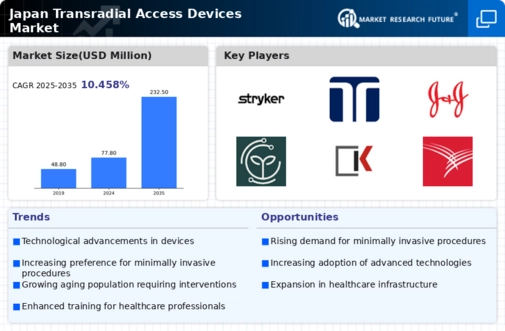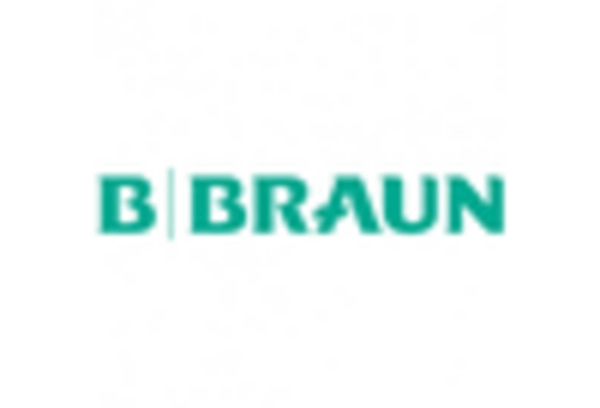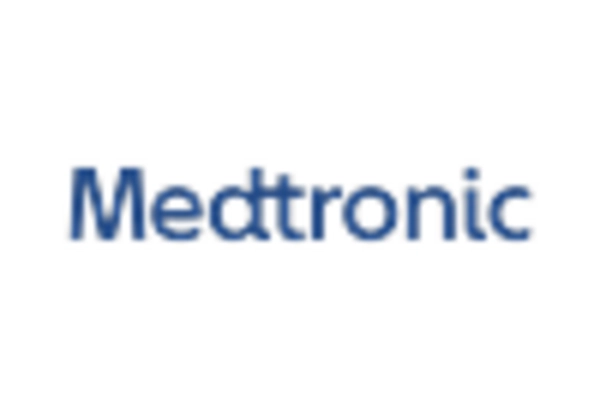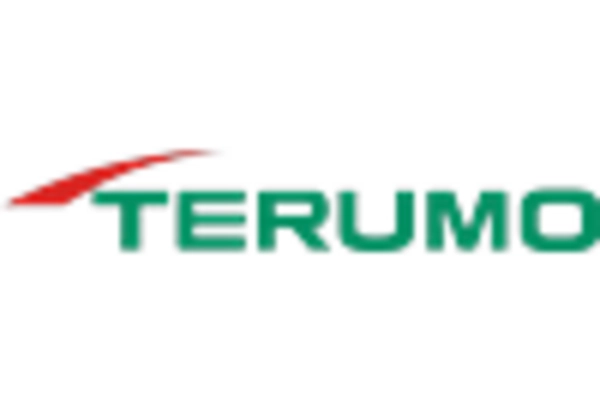Supportive Government Policies
Government initiatives aimed at improving healthcare infrastructure and access to advanced medical technologies are positively influencing the transradial access-devices market. In Japan, policies promoting the adoption of minimally invasive surgical techniques are likely to encourage hospitals to invest in transradial access devices. The government has been actively supporting research and development in the medical field, which may lead to innovations that enhance the efficacy of these devices. Furthermore, financial incentives for healthcare facilities that adopt new technologies could stimulate market growth. As a result, the transradial access-devices market may see a compound annual growth rate (CAGR) of around 12% over the next five years.
Advancements in Medical Technology
Technological innovations in medical devices are significantly influencing the transradial access-devices market. The introduction of advanced materials and designs enhances the performance and safety of these devices, making them more appealing to healthcare professionals. For instance, the development of ultra-thin catheters and improved hemostatic devices has led to better patient outcomes and reduced complications. In Japan, the market for medical devices is projected to reach approximately $50 billion by 2026, with a notable portion attributed to transradial access devices. This growth is likely driven by the increasing adoption of these advanced technologies in hospitals and clinics, as they align with the trend towards minimally invasive procedures.
Rising Prevalence of Cardiovascular Diseases
The increasing incidence of cardiovascular diseases in Japan is a primary driver for the transradial access-devices market. As the population ages, the demand for minimally invasive procedures rises, leading to a greater need for transradial access devices. Reports indicate that cardiovascular diseases account for approximately 30% of all deaths in Japan, highlighting the urgency for effective treatment options. This trend suggests that healthcare providers are likely to adopt transradial access techniques more frequently, as they offer reduced complications and faster recovery times compared to traditional methods. Consequently, the transradial access-devices market is expected to experience substantial growth, with projections indicating a potential increase in market value by over 15% annually in the coming years.
Growing Awareness Among Healthcare Professionals
The rising awareness and education among healthcare professionals regarding the benefits of transradial access techniques are propelling the transradial access-devices market. As more medical practitioners recognize the advantages of this approach, such as lower complication rates and improved patient comfort, the demand for transradial access devices is expected to increase. Training programs and workshops focusing on transradial access are becoming more prevalent in Japan, further enhancing the skill set of healthcare providers. This trend indicates a shift in clinical practice patterns, with a potential increase in the adoption rate of transradial access techniques by over 20% in the next few years, thereby positively impacting the market.
Increasing Patient Preference for Minimally Invasive Procedures
There is a notable shift in patient preferences towards minimally invasive procedures, which is driving the transradial access-devices market. Patients are increasingly seeking options that offer quicker recovery times, reduced pain, and lower risk of complications. This trend is particularly evident in Japan, where healthcare consumers are becoming more informed and proactive about their treatment choices. As a result, healthcare providers are adapting their practices to meet these demands, leading to a higher adoption rate of transradial access techniques. Market analysts suggest that this shift could result in a 25% increase in the utilization of transradial access devices in the coming years, further solidifying their role in modern medical practice.

















Leave a Comment